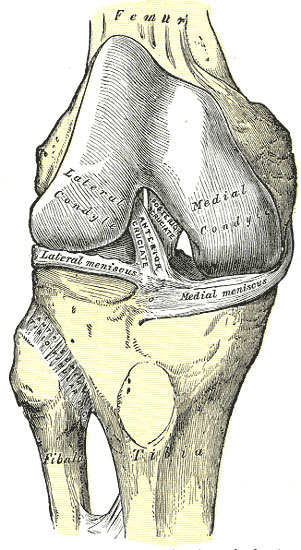Anterior Cruciate Ligament Rupture
The anterior cruciate ligament (ACL) is a strong ligament inside the knee that provides stability when undertaking movements such as twisting and pivoting. For example, your ACL will stabilise your knee when “side stepping” whilst running.
Commonly, a patient will suffer a ruptured ACL when he or she ran and suddenly tried to change direction and “stepped” off one leg. ACL ruptures often occur while engaging in sports such as league, union, soccer, touch football, basketball and netball. They can however occur in many other active pursuits.
It is not uncommon to feel or hear a “crack” and the knee gives way. Prominent swelling usually follows this.
Ruptures can also take place in other less obvious activities with what the patient sometimes believes is a trivial injury such as a trip or fall.
Thankfully, surgery is not always required. Some patients can function without an intact ACL simply by modifying their activities and also by undertaking rehabilitation.
An ACL reconstruction may be required for an active patient who wishes to continue pursuing activities that require an intact Anterior Cruciate Ligament. In most cases, the patient’s own hamstring tendons can be utilised as a graft to reconstruct the failed ligament.
Patients are advised that an ACL reconstruction may be desirable only after a formal consultation involving examination of the patient and the results of an MRI scan.
It is important that my patients make a fully informed decision to undergo an ACL reconstruction. Consequently, I take care to discuss with my patients the benefits and risks as well as what to expect after a reconstruction. My patients are then able to make an informed decision that suits their needs.

Fig 347 - Right knee-joint, from the front, showing interior ligaments.
Henry Gray. Anatomy of the Human Body. 1918.
Any surgical or invasive procedure carries risks. The information provided here is for general educational purposes only and not to be taken as specific advice. If you have any further questions about ACL ruptures or ACL reconstructions, please contact Dr Kiyork's rooms.
